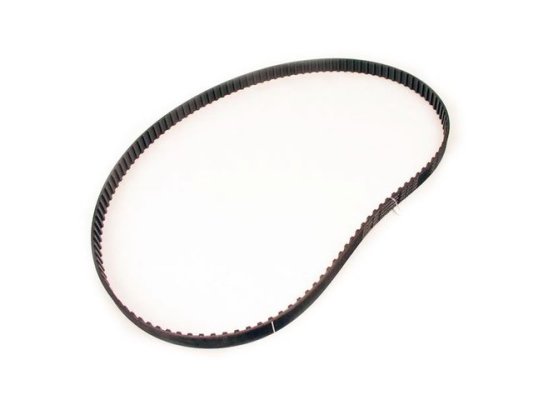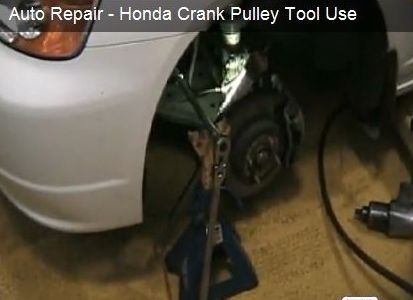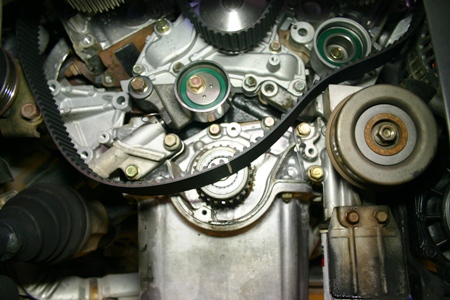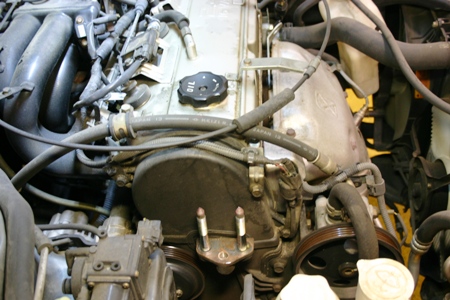March 14, 2012
Timing Belt
2 Comments

© DenLorsTools.com Summary: R&R (Remove and Replace). Things to consider when planning a T-Belt change. Preventative maintenance can help to make your car more dependable and less expensive to own in the long run. Below are some tips when changing a timing belt for maintenance.
Read the rest…
January 20, 2012
3M Products, How To Auto Repair, oil leaks, Timing Belt
No Comments

©DenLorsTools.com Summary: Removing camshaft and crankshaft seals without scratching the surface where the seals ride can be a little tricky. A scratch can cause the seal to leak ruining the whole job.
Read the rest…
July 14, 2011
Honda, Timing Belt
3 Comments

©DenLorsTools.com Summary: Purchase the Honda crank pulley tool now or continue reading for more information. DenLors Tools provides info on Honda and Acura crank pulley hexagon slot opening measurement. Measuring the size is important to determine what size holding tool is required for securing the crank pulley to loosen the crankshaft pulley bolt. Conversion from millimeters to inches provided in the photos for 45mm and 50mm. Read the rest…
October 2, 2010
Auto Specialty Tools, DIY, Honda, How To Auto Repair, Timing Belt
No Comments

Still image above – see bottom of the article for our DIY video.
© DenLorsTools.com Summary: Honda crank pulley tool info. Questions and answers in comment section. In 2005 the first car repair article written for DenLors Tools was on Honda and Acura crankshaft bolt removal. Before that, many years ago, in the early nineties prior to selling automotive tools for a living, I worked at a car repair shop as a tech in Lakeland Florida and had a timing belt job. To my surprise the Honda had a very tight crank bolt to loosen. In fact it was so difficult to loosen (without the correct tool) that I was unable to remove it to replace the timing belt. Hating to lose a gravy job and being on flat rate… I tried everything. The problem was that the whole engine turns when trying to loosen the bolt. Read the rest…
September 27, 2009
DIY, How To Auto Repair, Mistubishi, Timing Belt
174 Comments

© DenLorsTools.com Summary: In this auto repair blog we cover the basic timing belt R&R procedure on common Mitsubishi 2.5, 3.0, 3.5 and 3.8 V-6 SOHC engines. These interference engines can sustain valve damage if the timing belt breaks. We’ve got suggestions that can help make the job of replacing the timing belt and/or water pump successful. Listed are different Chrysler and Mitsubishi models that use engines with the same basic design when it comes to water pump and timing belt replacement. Also a diagram for timing belt routing and marks for the 3.5 SOHC.
Read the rest…
August 29, 2009
DIY, How To Auto Repair, Mistubishi, Timing Belt
155 Comments

© DenLorsTools.com Summary: In this automotive repair article we cover timing belt R&R instructions on the Mitsubishi 2.4 L SOHC engine and the recommended replacement interval. We list the different makes and models that use this particular engine. Automotive repair questions and answers are included along with a diagram for timing belt marks.
The Mitsubishi 2.4 Liter SOHC engine is used in the Eclipse, Galant and Outlander. Many people are unaware that the engine is also used in the Chrysler Sebring and Dodge Stratus. It’s important to know that the 2.4 is an interference engine that may end up with bent valves and possibly damaged pistons if the timing belt strips or breaks during driving. The motor includes a main timing belt and a smaller balance shaft belt. Both of these should be replaced at the same time. The manufacturer recommended replacement interval is every 60,000 miles.
Read the rest…





